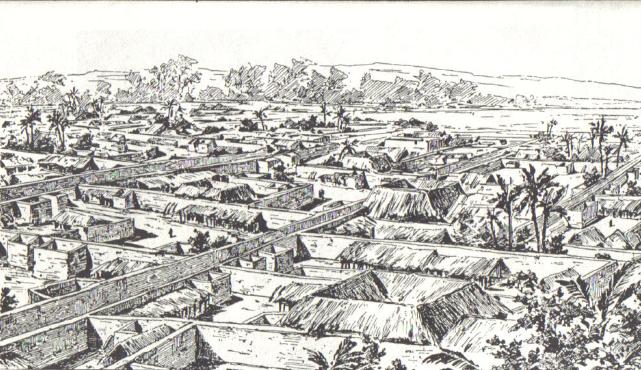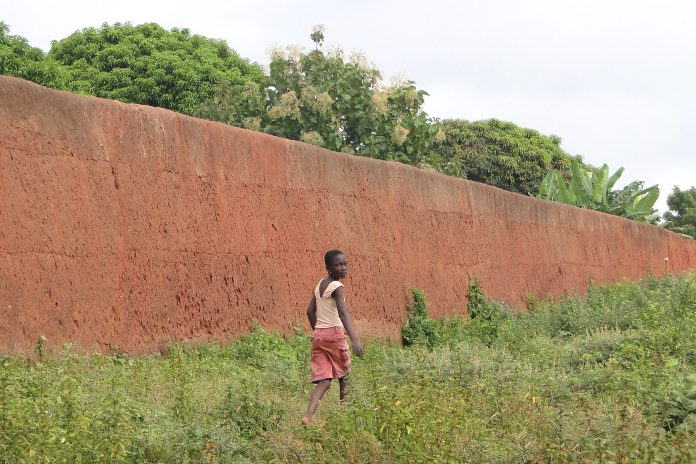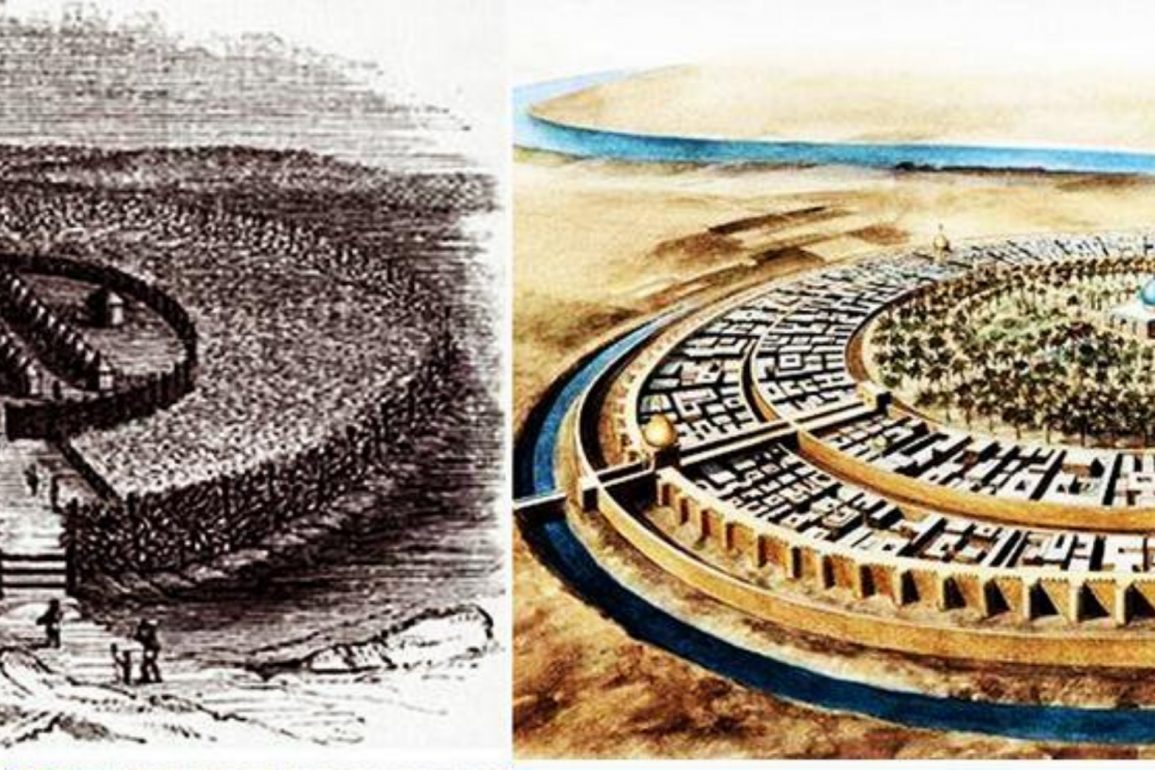Almost every African who swims in the waters of Africa’s history knows that the Kingdom Of Benin was one of the greatest, oldest and most civilized kingdom in west Africa.
But most do not know about the walls of Benin city unless they go deeper in the “waters”. Though the walls of Benin city might not be popular like the Great Walls Of China, it was “the world’s largest earthworks prior to the mechanical era”.
The Walls Of Benin

Constructed from around 800 to around 1400 AD, The Walls Of Benin were a series of earthworks made up of moats and ramparts known as “Iya” in the Edo language in the area around present-day Benin City, the capital of present-day Edo state in Nigeria.
Situated at the southern outskirt of the defunct Benin Kingdom, The Walls Of Benin stood for over 400 years shielding the Benin kingdom, her traditions, civilization and people from attacks and what have you.
On the 11th of September 1999, popular science writer who had reported on the environment, popular science and development issues from 64 countries over the past 20 years, Fred Pearce, talked about the Walls Of Benin which he published in an article in the widely read science magazine, The New Scientist. He stated that:
“They extend for some 16,000km in all, in a mosaic of more than 500 interconnected settlement boundaries. They cover 2, 510 sq. miles (6, 500 square kilometers) and were all dug by the Edo people.”
The science writer also said that the Walls Of Benin were four times longer than the Great Wall of China and took about 150 million hours of digging during construction. In his words:
“In all, they are four times longer than the Great Wall of China and consumed a hundred times more material than the Great Pyramid of Cheops. They took an estimated 150 million hours of digging to construct and are perhaps the largest single archaeological phenomenon on the planet.”
Professor in the School of Information at the University of Michigan, Ron Eglash who studies relationship between mathematics and culture observed and made research about the Walls of Benin, he came to a conclusion that: “When Europeans first came to Africa, they considered the architecture disorganised and thus primitive. It never occurred to them that the Africans might have been using a form of mathematics that they hadn’t even discovered yet.” The Ethnomathematician agrees that Africans might have been using a form of mathematics that the Britain hadn’t even discovered yet.
The Walls Of Benin, A Wonder Lost
The Benin Kingdom was a highly civilized and organized Kingdom, this fact is agreed by many scholars. Dutch writer, Olfert Dapper who wrote books about world history and geography had this to say about the Great Kingdom Of Benin: “Houses are built alongside the streets in good order, the one close to the other. Adorned with gables and steps … they are usually broad with long galleries inside, especially so in the case of the houses of the nobility, and divided into many rooms which are separated by walls made of red clay, very well erected.”
“[The walls are] as shiny and smooth by washing and rubbing as any wall in Holland can be made with chalk, and they are like mirrors. The upper storeys are made of the same sort of clay. Moreover, every house is provided with a well for the supply of fresh water” This proves that the Benin City was a well structured, and designed city.
Benin’s social structure was a complex, sophisticated yet developed one. It was governed by a monarch called the “Oba” who resided in an extremely well fortified and masterfully designed palace at the center. The Benin kingdom had a wonderful relationship with Portugal, they traded goods like pepper, ivory, palm oil, bronze, etc amongst themselves. A Portuguese captain called Lourenco Pinto visited the Benin kingdom in the 17th century then he wrote from his observations: “Great Benin, where the King resides, is larger than Lisbon, all the streets run straight and as far as the eyes can see. The houses are large, especially that of the king which is richly decorated and has Fine columns. The city is wealthy and industrious. It is so well governed that theft is unknown and the people live in such Security that they have no door to their houses”.

Having a strong economic and military structure, the Benin kingdom was an independent one. They followed no regulations by other empires and kingdoms as they traded. The British Government hated this fact as they wanted to colonize the region, a subtle way of saying they wanted to control the region. The British Government, in 1897 sent out a small troop of 10 soldiers to the Benin kingdom, the intention of this troop is not really known but most scholars say it was a troop to the Oba carrying a message from Britain. This message is said to have the British Government’s intention of governing Benin. But something went wrong, the soldiers were attacked and killed, the killers spared only two of the British soldiers. The killers were the Oba’s soldiers but most Binis maintain that the order wasn’t from the Oba himself but some of his Elders, this isn’t proven yet.
On hearing this, the British Government sent out 1,200 soldiers to ravage the Benin kingdom, this didn’t go easily though as the Benin kingdom soldiers resisted the attack for 17 days until the British Government finally won and took over the kingdom. They looted the Oba’s palace and stole everything in it, they blew up and destroyed the Walls Of Benin. The then Oba of the Benin kingdom, Oba Ovoramwen Nogbaisi was forced to live in exile. This right here, led to the gradual lost of the African wonder. With this act, the British government destroyed one of the earliest civilizations of man. This act by the British Government is called the “Benin Expedition of 1897 ”. It was one of the punitive expedition by the UK.
The Walls Of Benin, described in the 1974 edition of the Guinness Book of Records as being “the world’s largest earthworks prior to the mechanical era.” now exists only in its ruins. In 1995, UNESCO World Heritage Tentative List listed the Walls Of Benin in the cultural category. Most of the remains of the wall are constantly pulled down for construction purposes, while some of the ruins lie undiscovered in the bushes of Nigeria.

Keep visiting vocalafrica.com to discover more African stories, thank you!






